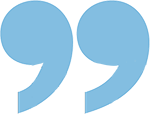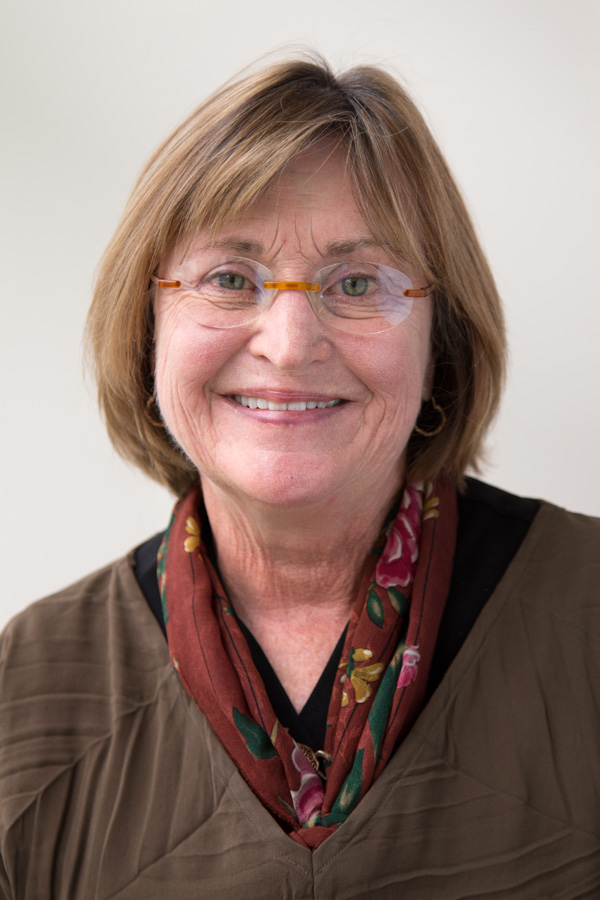Joan Connell – Professor Emeritus
Joan Connell, BA
-
Dear Prof. Connell,
You probably don’t remember me, but I was one of your students ….
So begins the sort of note that often lands in my inbox, from alumni who want to ask a question, request a reference or just let me know what’s happening in their lives.
Of course I remember you! And I’m so pleased you reached out.
After 12 years of teaching journalism at Western Washington University – by my count that adds up to some 1500 students – it thrills me to hear what you’re up to and even more if I can offer professional help in any way. Western has made it easy for me to stay in touch – and to continue my own journalistic work from my perch here in Birch Bay, Washington.
As an emerita faculty, I have kept both my WWU email address (joan.connell@wwu.edu) and my access to Canvas, so I can refresh my memory of your brilliant ethics research papers or stories published in Klipsun, so as to write a proper recommendation for a fellowship or a job application. I also have library privileges to continue my research. Best of all, I have free parking, so I’ve been on campus quite a bit in the past year, attending lectures and public events that I never had time for when I was teaching.
The main focus of my research these days is artificial intelligence. AI promises to transform the news industry, our information environment, our laws, norms and ethics – and the creative process itself. And while large news organizations like the Associated Press, Reuters and Bloomberg are making big bets on AI to improve efficiency and introduce innovations into reporting methods, AI is still poorly understood – by the general public, but also by most journalists.
AI has been around in one form or another since the 1950s, creating a broad set of tools that have given us Siri, Alexa, Grammarly, Spellcheck, Zoom transcripts and Otter AI. But Generative AI – chatbot technology that generates predictive texts in response to human prompts – is a true game-changer. Chat GPT, Microsoft’s Bing Search Engine, Google’s Gemini are major players, but they represent only the tip of the AI iceberg.
I’ve found that journalists are having a hard time reporting on generative AI and the Large Language Models that provide training data for chatbots. They also have much work to do on responsibly using this technology in their reporting. They tend to easily fall for the Silicon Valley hype around Chat GPT, Google and Meta, and their attempts to explain the AI phenomenon are generally more oriented toward science fiction than toward rigorous inquiry. And very few newsrooms have a code of ethics specifically targeting the use of AI. Some of the most significant learnings have come from University of Washington linguist and computer scientist Emily Bender, a major critic of media misrepresentations of AI and MIT’s Joy Buolamwini of the Algorithmic Justice League. I’m especially grateful to the Harvard Graduate School of Education’s AI Pedagogy Project, which has conducted a series of Zoom-based seminars on media literacy in the age of AI.
I had a chance recently to share some of these learnings at the Society of Professional Journalists Region 10 Student Conference, held in Seattle in mid-April. It was wonderful to make contact with some of my former students and to learn how they are meeting the challenges of AI in the newsroom and in real life. Here’s a link to the slide deck for that presentation: Media Literacy, Media Ethics and Artificial Intelligence.
What are your experiences with AI? What questions do you have about the way this technology will transform our lives?
Send me an email. Connect with me on LinkedIn. I promise, I will remember you.
-
Winter 2022 Update: Joan Connell
The most gratifying lesson for me in this pandemic year is a fresh appreciation of the magic of the classroom: The thrill of engaging with actual students — In real life. Fully vaccinated. Fully masked.
Western Washington University is slowly coming to life. Only a small cohort of faculty returned to full-time, face-to-face instruction on campus fall and winter quarters. Most others were teaching either partial or fully remote classes — a smart move, given the proliferating virus. We hope to see more journalism faculty return to full-time, face-to-face learning by spring. But in the meantime, all those empty faculty parking spaces outside the Communications Facility have been opened up to those relegated in more remote lots. A real winter bonus for students and teachers.
For now, the halls are quieter than they were in the before-times. There are fewer in-person office hours and fewer open doors. But by and large the craft-related courses like newswriting, media law, visual journalism, public relations, The Front, Klipsun and Planet take place in the face-to-face environment that before COVID-19 we took for granted.
People are clearly at work here — the energy is palpable. There’s an interpersonal warmth that comes from the joy of finally no longer being home alone. There is a sense that we are back. Some students are understandably reluctant to join in-person classes, because of the highly contagious omicron variant and the vulnerability of loved ones. Most in-person instructors take special time to confer with these students via Zoom and make additional resources available. I have a supply of coronavirus tests and KN95 masks available to anyone wary of returning to the classroom.
Media Ethics and MLK
Ironically, one of the most exciting things to happen in our collective academic life occurred on Zoom Jan. 15, when WWU students had a chance to engage in a live Q&A with the noted historian Ibram X. Kendi, as part of WWU’s Martin Luther King Day Jr. observances.
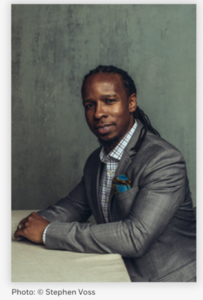 More that 800 participants — including most of my Mass Media Ethics class — engaged in a one-on-one of sorts over Zoom with Kendi, who is the Mellon Professor in the Humanities at Boston University and winner of a 2021 MacArthur Genius award. Kendi’s book, ”How to Be an Antiracist,” won the 2020 National Book Award. He is on the leading edge of current controversies over how American history is taught in our schools and the damage systemic racism has done to us all.
More that 800 participants — including most of my Mass Media Ethics class — engaged in a one-on-one of sorts over Zoom with Kendi, who is the Mellon Professor in the Humanities at Boston University and winner of a 2021 MacArthur Genius award. Kendi’s book, ”How to Be an Antiracist,” won the 2020 National Book Award. He is on the leading edge of current controversies over how American history is taught in our schools and the damage systemic racism has done to us all. WWU’s King Day Observance was a remarkable gathering: Students from Northwest Indian College, Whatcom Community College, Bellingham Technical College and Bellingham Public Schools came together with WWU students to reflect on King’s legacy with Kendi and a variety of other speakers. I am so grateful that WWU had the vision to produce this valuable educational experience.
My class had just read Kendi’s 2019 essay in The Atlantic, “A Battle Between Two Souls of America.” By coincidence, the university announced the Kendi event. The result was a 30-minute conversation moderated by WWU’s amazing Dr. Sislena Ledbetter, executive director for counseling, health and wellness. It was an intellectually generous conversation with a brilliant, uncompromising and inspiring young historian, with an easy-going manner, a magnetic smile and a very sobering message.
Just one day before the WWU event, the U.S. Senate failed to pass a voting rights bill that would have safeguarded the 2024 election. The future of democracy is hard to read. At least 19 states have already passed laws making voting more difficult. Other laws seek to undermine the electoral college and threaten valid vote counts.
“There is a very likely possibility,” Kendi told our virtual gathering, “that the 2024 presidential election will be compromised. This nation very soon may be run by fascists.”
What do we do now, in light of these events? That depends on us, on our emerging awareness, and on our evolving understanding of the virtues and values that are the basis of our democracy.
Kendi was a busy person on MLK day, involved in a variety of media events. He conducted a similar conversation later in the day on the “Beyond the Scenes” podcast of The Daily Show, with Trevor Noah. If you’re curious about what Kendi’s work is all about, take a look.
Klipsun
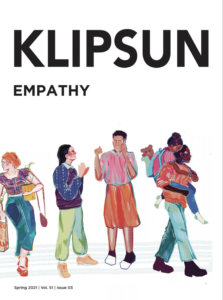
Klipsun Spring 2021 cover Klipsun magazine continues to publish award-winning work. Nearly two years of remote learning have not daunted the creative spirit of a series of talented editors and storytellers. Klipsun editors and writers continue to produce quarterly themed editions online and print editions in pdf format.
But sadly, only a limited number of these editions have seen ink kiss paper.
The problem is circulation. Because of pandemic concerns, the kiosks where we used to distribute the print edition of our magazine on campus have disappeared. In Bellingham, the coffee shops and gathering places where we would place free copies no longer are interested in having them due to transmissibility issues.
Nevertheless, we prevail. The Spring 2021 edition, edited by Jaya Flanary, was published and hand-distributed on campus and mailed to Klipsun staffers. It’s a beauty. The Student Publications Council, which provides funding for student publications, is exploring ways to mail more print editions to alumni and others who are Klipsun fans.
Meanwhile, you can see the various plans for print editions in the WWU CEDAR Archive.
WWU alumni, we treasure you and want to keep in touch. Let me know how you are doing: joan.connell@wwu.edu.
-
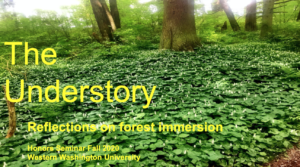 No sane person could say that they’ve actually enjoyed the altered universe of remote learning we’ve inhabited for more than a year now. But for all the heartache of COVID-19 has brought us – grief and sickness, isolation, lost jobs, derailed dreams – the multiple crises of this challenging time have also been a catalyst for creativity and an incubator of resilience.
No sane person could say that they’ve actually enjoyed the altered universe of remote learning we’ve inhabited for more than a year now. But for all the heartache of COVID-19 has brought us – grief and sickness, isolation, lost jobs, derailed dreams – the multiple crises of this challenging time have also been a catalyst for creativity and an incubator of resilience. They have shaken us out of complacency and opened our eyes to new ways of teaching, learning and coping with circumstances beyond our control.
Never have I seen Klipsun editors and writers more focused and productive. They have adapted to the constraints of reporting while observing social distancing. They have become even more agile and passionate multimedia storytellers, exploring themes of empathy, inequality, social and racial justice, ecological grief, BIPOC pride, emotional self-care, the joy of cooking, transgender identity, and Whatcom County’s sorry history of white supremacy.
This was the year journalism confronted its own unwitting culpability in amplifying falsehood. In ethics class, we considered the value of the truth sandwich when reporting on presidential lies. We used the online game Harmony Square to understand how bad actors leverage social media to spread disinformation. A case study from Harvard’s Shorenstein Center on the bogus documentary, #Plandemic shed light on how news organizations struggle to responsibly cover conspiracy theories.
My biggest teaching challenge involved an Honors course in Religion, Ethics and Nature, a long-planned inquiry into the impact of virtues and values of religion on the evolution of ecological ethics, from Coast Salish creation stories to Buddhist and Confucian philosophy, the emerging principles of African-American Eco-Womanism and religious naturalism. I had planned to teach this class in Sehome Arboretum with various experts in religion, science and evolutionary theory sharing their insights in a forest setting. When the closure of campus in Fall 2020 forced us out of the forest, we pivoted to a different exploration of nature and spirituality: The Japanese practice of forest bathing.
Our mission was to each spend an hour weekly detached from technology and immersed in a solitary encounter with nature. To document these weekly forest forays, we built a giant Google slide deck, titled The Understory, a reference to the 25 feet of botanical life above the forest floor crucial to maintaining the forest ecosystem.
We each documented our weekly nature experiences on a slide featuring reflections in prose, poetry, photos, videos and music, then shared them in our twice-weekly Zoom seminars. We grew to love these nature immersions; the process of creative collaboration was energizing and illuminating.
The Understory project united 16 geographically scattered individuals in an intimate experience of the unleafing autumnal forest that transcended the distance between us. It gave us experiences of inspiration and singular beauty. But most of all, in this season of sickness and isolation, it was an unexpected gift: a way for us to be alone, together.
-
Climate crisis, ecological ethics, vaping, artificial intelligence whistleblowers of all sorts, social media’s impact on our elections, the Trump impeachment: what’s happening right now in America and the world means there’s no shortage of dilemmas to contemplate in my Mass Media Ethics class. I continue to be impressed by the quality of thought our students bring to these topics. At a time when it is easy to become weary, cynical or downright alarmed about the state of the world, the creative intelligence our students apply to these formidable issues gives me reason to believe that the future is in good hands.
Klipsun celebrated its 50th anniversary this year, marking the moment in 1979 when Klipsun emerged from a decades-long cocoon as a Western Washington University yearbook to a fully realized and independent student magazine. The Journalism Department celebrated with a party in October that drew former students and faculty from the 70s, 80s, 90s and beyond. It was a true homecoming event as Klipsun alumni connected with former classmates and reminisced with the original faculty adviser, Ted Stannard and longtime Klipsun advisers Carolyn Dale, Tim Pilgrim, Stephen Howie and Peggy Watt.
Klipsun continues its evolution as a digital-first magazine and a deluxe print edition distributed at the beginning of each quarter. Its mission is multimedia narrative storytelling, an ambitious goal realized with the guidance of a different editorial leadership team each quarter. Expert advice and support from Western’s Student Technology Center provides access to recording equipment, studio space and technical support to our budding podcasters and multimedia storytellers. Check out our growing archive of podcasts and videos.
On a personal note, I’m pleased to report that my book, Healing All Creation: Genesis, the Gospel of Mark and the Story of the Universe (Rowman & Littlefield, 2019) has received favorable reviews from Publishers Weekly and an array of religion scholars. Its first edition is designed specifically for libraries; so far this book has found a home on the shelves of a diverse array of college, university and seminary libraries and in public libraries in the U.S., Canada, Australia, the U.K, Germany and Switzerland.
And here’s a message to all those former students who receive this newsletter: This is my eighth year teaching at Wester Washington University and by my rough calculation that means that I’ve taught 1,200 of you in ethics, news writing and narrative journalism classes. It’s both heart-warming and humbling to have had the opportunity to teach you — and to learn from you. Wherever you may be, know how grateful I am for the opportunity to be your teacher Drop me a line, if you’re inclined, and let me know how you are and what you are doing.
-
It’s a tough world out there for professional communicators. Social media continues to alter the way news is produced and consumed. And our current chaotic political and cultural landscape has provided news editorial, public relations, and visual journalism majors in my Mass Media Ethics classes with no shortage of topics to grapple with in the 2018-19 academic year.
Our students are embracing the challenges with original and compelling research on a wide range of subjects, from the ethics of vaping and the marketing of Juul to teens. to the ethics of presidential press secretaries and the impact of activist student journalists from Marjory Stoneman Douglas High School in Parkland, Florida, on the gun control debate.
I continue to be impressed with the passion, discipline and focus of our students as they chart the gray areas of our shifting media landscape. We’ve devoted much attention to how journalists report on political leaders who misrepresent the truth, how to ethically and effectively cover climate change and how to report on the Me Too movement, which has revealed sexual misconduct in high places (including the news media.)
Revelations of how easily Russian operatives gamed Facebook in the 2016 election, the mounting evidence that shows how anger drives engagement on social media and the ethics (or lack thereof) of online influencers all have contributed to robust classroom discussion and debate about the new challenges journalists, public relations professionals and the architects of social media platforms all face.
Over at Klipsun magazine, where I serve as writing coach and faculty advisor, our award-winning student editors, photographers, writers and designers continue to produce compelling narrative journalism in print and online. Take a look at And Then They Came for Your Family, on how local people are providing financial aid and moral support to undocumented members of our community who have been arrested, detained and deported by ICE agents. Help From Above, profiles mountain search and rescue worker Joe Edmark. Genuinely Good at Soccer traces Andrea Pelogi’s amazing journey from a Brazilian orphanage to being a star athlete at Western.
Finally, a personal note: Reaching back to my professional roots as a writer and editor specializing in religion, ethics and moral issues, I’ve co-authored a new book with scripture scholar Adam Bartholomew: Healing All Creation: Genesis, the Gospel of Mark and the Story of the Universe, will be published in April by Rowman & Littlefield. Aimed at a general audience, with particular emphasis on millennials, the book popularizes an ongoing conversation between theologians and scientists about the spiritual dimension of evolution and offers fresh insights on how people of good will respond to a wounded world. Find it on Amazon, beginning in April.
-
An ethically challenged president castigates journalists as “liars” and “enemies of the people.” With mounting incivility, a divided society finds it hard to agree on even the most basic verifiable truths. Social media, that firehouse of information that most people rely on as a source of news, has become weaponized by political partisans, hostile governments and click-bait entrepreneurs in search of a quick buck. It’s getting very hard to tell the real news from the fake.
In this turbulent media environment, never has it been more important for journalists and other professional communicators to tell true stories that reflect the real issues we face: war and peace, economic inequality, environmental degradation, hatred and discrimination. Never has it been more important for citizens to be literate consumers of verifiable news. Never has there been a greater need for news media—and the social media that feed our growing appetite for digital content in all its forms—to be guided by a code of ethics that values the truth, respects all stakeholders, is transparent in its methods and is accountable for its actions.
It is a bleak media landscape. But the good news is that our classrooms at Western Washington University are full of students who are idealistic, highly engaged and eager to make this broken world a better place. This idealism is manifest in the students enrolled in courses I’m teaching this academic year: Introduction to News Writing, Mass Media Ethics and and the long-form narrative journalism of Klipsun magazine.
I see emerging multimedia storytellers who are developing the curiosity, empathy and critical thinking to bear witness to the challenging circumstances on this campus and in the world: They are exploring the hopes and fears of hundreds of undocumented WWU students who face the very real possibility of deportation if Congress does not take action to protect them. They are considering the challenges faced by 33 percent of Western students who are the first in their families to attend college and the 26 percent of our students who rely on Pell Grants, which the Trump administration is seeking to eliminate. They are seeking to understand the challenges faced by large numbers of veterans and other non-traditional students returning to school. Not surprisingly, they are telling personal stories about the increasing numbers of students for whom anxiety is a fact of life.
It may sound grim, but it’s inspiring, actually. I see our students rising to confront the issues of our day and responding to them according to the ethical code that guides us as journalists: Seek the truth and report it fully, fairly and courageously. Minimize harm. Bear witness to issues and events independently, without bias. Be transparent and accountable in our actions.
This is an important time to be a professional communicator; it’s an important time for higher education to stand up for the values that bring out our best, as citizens of our country and of the world. It is going to be a challenging year. And we’re on it.
